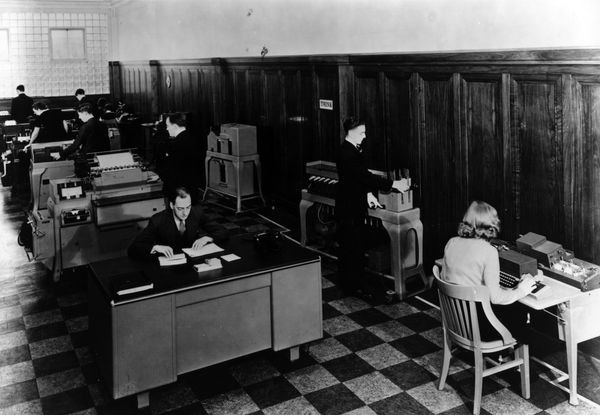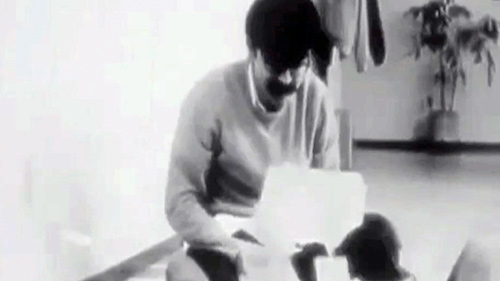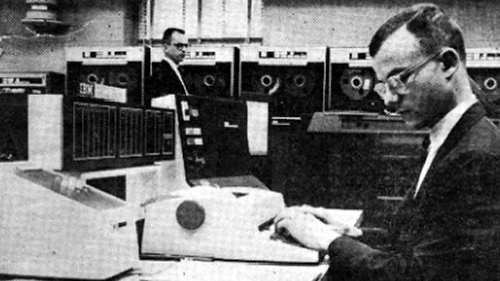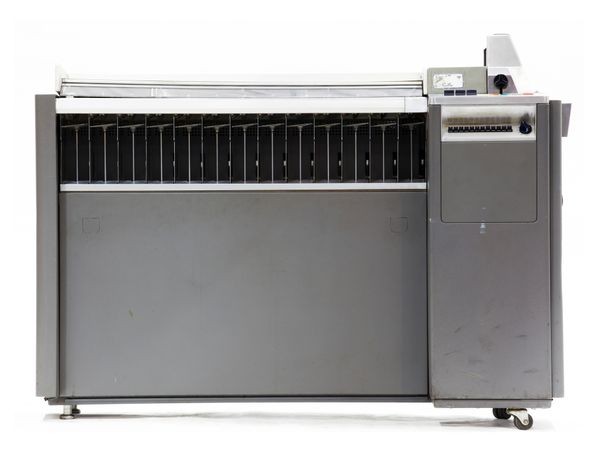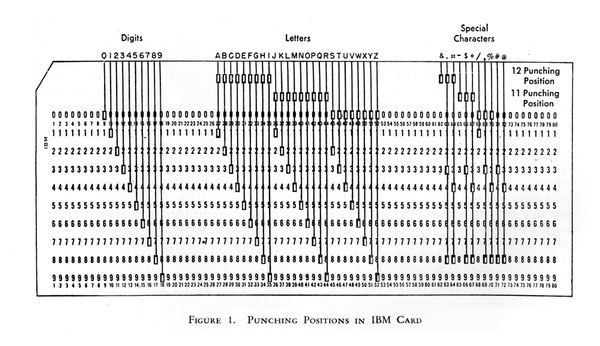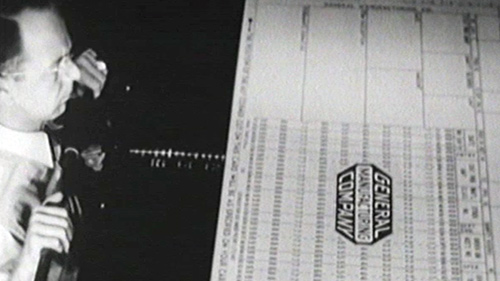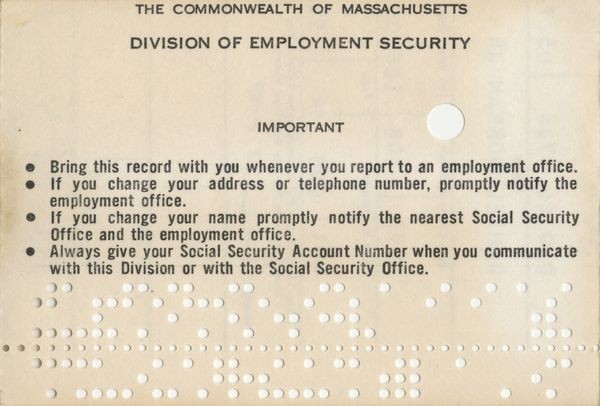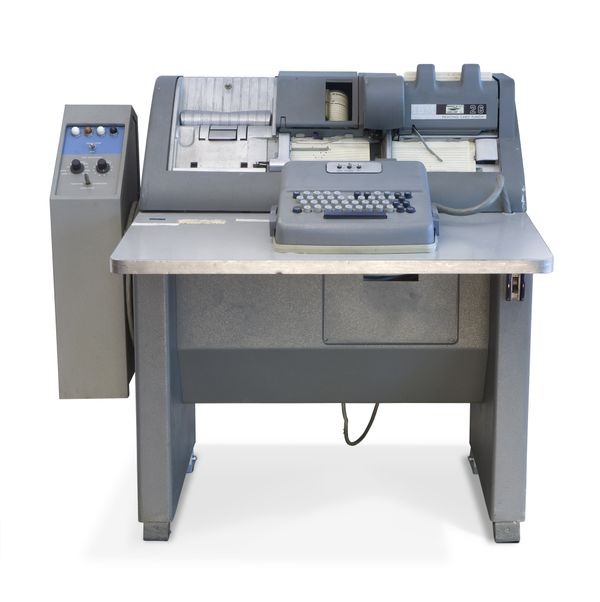Creating A Digital Code
A typical 1930s punched card installation
The arrangement of card tabulating equipment in large rooms was designed to minimize the movement of people carrying boxes of cards. Many companies used time and motion studies of the kind pioneered by Frederick Taylor to increase efficiency.
Creating a Digital Code
The principle of using hole patterns to store information is similar to the binary code of today’s digital media, in which ones and zeros (equal to holes or no holes) record data.
Until the 1970s, punched cards remained the primary computer input and storage medium for data and, later, software programs.
Ellis D. Kropotchev Silent Film
This student-produced film from Stanford University is a humorous spoof of the trials and tribulations of a college hacker condemned to use batch processing. Originally created by Arthur Eisenson and Gary Feldman, the film gives the viewer a feel for the process of computer programming in the 1960s. Original music by Heather Yager.
View Artifact DetailBill Worthington: What is a Punched Card?
Chapter Menu
1. What is a Punched Card
2. Punched Cards and the Computer Age
3. Don’t Drop the Deck
4. Death Knell of the Punched Card
Type 83 Card Sorter
These sorters use a metal brush to detect the position of the hole in the column being sorted. When the brush contacts a metal roller or bar through the hole, it closes an electrical circuit that causes an electromagnet to direct the card into one of 13 chutes leading to the appropriate bin. The type 83 could process 1,000 cards a minute – almost 17 per second.
View Artifact DetailIBM Card Punch Position
IBM cards could store up to 80 characters. This diagram shows the positions of the holes for each of those characters: numbers, letters and special characters. Some experienced card handlers could read the cards without aid of machinery!
View Artifact DetailDivision of Employment Security Identification Card
Many organizations used punched cards as checks, bills, or identification cards. The computer read the holes, and the people read the printing.
View Artifact DetailType 26 Printing Card Punch
The “26” was the workhorse of the punched card office for over two decades. Blank punched cards were automatically moved from an input hopper, past a punching station, to an output hopper. While the punched holes were for machines to read, a printed version on top of the card allowed people to read the information as well.
View Artifact Detail